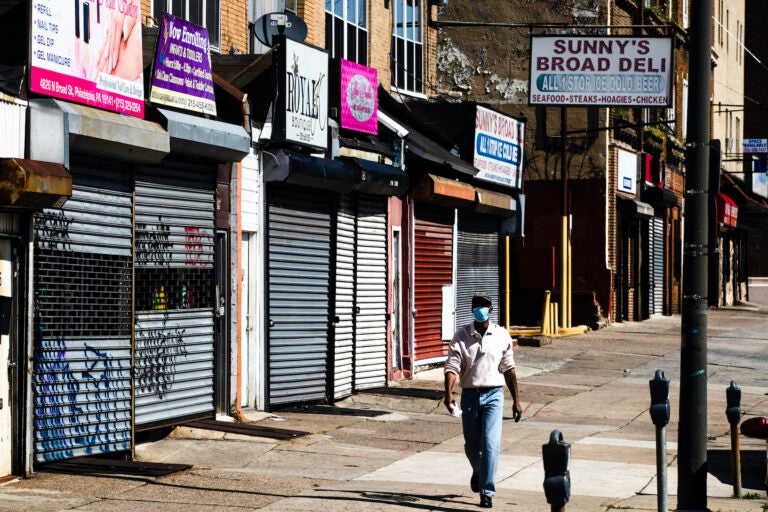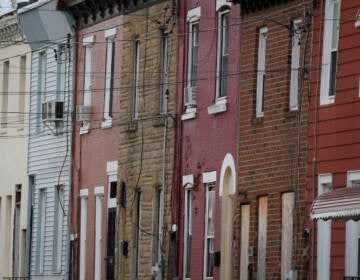Black and Hispanic workers feeling brunt of pandemic recession according to Philly Fed
A new report from the Federal Reserve of Philadelphia adds detail to how the recession has created two different employment realities, stratified by race and education level.

A person wearing a protective face mask as a precaution against the coronavirus walks past stuttered businesses in Philadelphia, Thursday, May 7, 2020. (AP Photo/Matt Rourke)
A new report from the Federal Reserve of Philadelphia adds detail to how the coronavirus recession has created two different employment realities, stratified by race and education level.
“White workers have fared better than Black and Hispanic workers, and workers with a bachelor’s degree have fared better than those with lower levels of formal education,” said Keith Wardrip, the Fed’s community development research manager.
Wardrip said previous surveys already showed that the current recession, and limited recovery, is an unequal one. For example, other research has indicated low-wage jobs are disproportionately impacted and that white workers are faring better overall.
“I wanted to look at workers not just based on their race, based on their gender, or based on their education — but based on all three,” he said. “At the risk of stating the obvious, no worker is one-dimensional.”
Wardrip also narrowed in on how these different factors are playing out for workers in Pennsylvania, New Jersey, and Delaware by comparing how each group fared between May and October 2019, and comparing that to how they fared May through October 2020.
In these states, the people who saw the biggest declines in employment between those periods were Black men (21%), Black women (20%) and Hispanic women (19%) with no more than a high school diploma.
Across education levels, white women, Hispanic men, and white men saw much smaller drops in employment rates.
Higher education also made a difference. Taken as a whole, workers with college degrees fared better than those without, although Black and Hispanic women with college degrees saw the largest drops when comparing people with the same level of education.
Overall, “white men, regardless of their education attainment, experienced much smaller declines” than others, said Wardrip. On the flipside, Black men, Black women, and Hispanic women saw the biggest losses, regardless of education level.
The Federal Reserve looked at three national surveys — one from the Bureau of Labor Statistics, one by the Census Bureau, and one by the Board of Governors of the Federal Reserve System — to draw conclusions and compare the region to the country as a whole.
Pennsylvania’s employment rate declined by 8 percentage points since 2019, slightly worse than the dip nationally.
The report stops short of giving explanations for its findings, but points to research on lack of access to child care, and how race influences pay and job opportunities as “clues.”
“The underlying drivers of these uneven outcomes … they should be explored, to ensure the economic recovery is not only full, but also equitable,” said Wardrip.
 WHYY is one of over 20 news organizations producing Broke in Philly, a collaborative reporting project on solutions to poverty and the city’s push towards economic justice. Follow us at @BrokeInPhilly.
WHYY is one of over 20 news organizations producing Broke in Philly, a collaborative reporting project on solutions to poverty and the city’s push towards economic justice. Follow us at @BrokeInPhilly.

Get daily updates from WHYY News!
WHYY is your source for fact-based, in-depth journalism and information. As a nonprofit organization, we rely on financial support from readers like you. Please give today.


![CoronavirusPandemic_1024x512[1]](https://whyy.org/wp-content/uploads/2020/03/CoronavirusPandemic_1024x5121-300x150.jpg)


